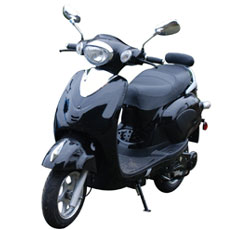Bijna 4 weken geleden heb ik een elektrische scooter gekocht, een Novox C20 (25km/h model) om precies te zijn. Waarom? Ik woon in Zeeland en daar is het in de zomer een drama om met de auto ergens te komen, laat staan parkeren. (Nee, het is echt niet een probleem van de randstad!) Maar ook omdat ik elektrische voertuigen leuk vind.
De afgelopen weken heb ik dus al aardig wat kilometers gemaakt op de C20 en dat bevalt eigenlijk prima! Het is opzich best raar, je pakt de scooter uit de garage en gaat rijden, tanken is niet meer nodig.
Het leukste zijn toch wel de reacties van de mensen om je heen, je hoort en ziet iedereen over je praten, want zeker in Zeeland heeft nog bijna niemand een elektrische scooter gezien. Ook bij een verkeerslicht blijft het leuk, je bent volledig stil, dus je mensen kijken je raar aan.
Een groter probleem is toch wel dat je érg defensief moet rijden, mensen gaan er nu eenmaal vanuit dat ze ander verkeer aan horen komen, dus fietsers zullen zonder te kijken links af slaan, inhalen zonder naar achteren te kijken en ook voetgangers steken lukraak over, ze horen je immers gewoon niet…
Dat blijft toch wel vervelend en soms ook érg irritant, soms lijdt het zelfs tot een boze reactie van mensen, maar dat is gewoon omdat ze erg van je schrikken.
In het begin had ik echter wel last van “range anxiety”, je denkt constant dat je accu leeg is, hij langzamer begint te rijden of dat je het gewoon niet naar huis gaat halen, terwijl dat allemaal tussen je oren zit. Het komt gewoon omdat ik er zelf ook nog niet helemaal aan gewend ben dat er geen geluid van af komt.
Het bereik is verder prima, de eerste dag heb ik samen met mijn vriendin er op ruim 70 kilometer gereden waar hij volgens het boekje 100 moet halen (met één persoon). Inmiddels rijden we regelmatig met twee personen er op zo’n 50 kilometer op een dag en dat haalt de scooter allemaal met gemak. Over landweggetjes met flinke wind, de duinen naar boven, het is geen probleem, ook niet met twee personen.
Het begint wel steeds meer te wennen, je komt thuis, prikt de scooter aan de lader en de volgende dag kan je er gewoon weer mee rijden, heerlijk!
Nu is het wachten op de Tesla Model S..

